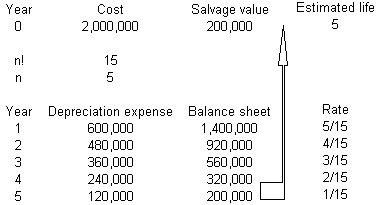CFA Level 1 - Assets
Change in Useful life or Salvage Value
All depreciation methods estimate both the useful life of an asset and its salvage value. As time passes the useful life of a company's equipment may be cut short (new technology), and its salvage value may also be affected. Once this happens there is asset impairment.
Companies can do two things:
1) They can accelerate the asset's depreciation and fix the reduction in useful life or salvage value over time or
2) They can do the recommended thing, which is to recognize the impairment and report it on the income statement right away.
Note that changes in useful life and salvage value are considered changes in accounting estimates, not changes in accounting principle. The result is this: no need to restate past financial statements.
|
Sale, Exchange, or Disposal of Depreciable Assets
Companies that are in the business of exploring and/or extracting and/or transforming natural resources such as timber, gold, silver, oil and gas, among other resources are known as "natural resource companies". The main assets these companies have are their inventory of natural resources. These assets must be reported at their cost of carry (or carrying cost). The carrying costs for natural resources include the cost of acquiring the lands or mines, cost of timber-cutting rights and the cost of exploration and development of the natural resources. These costs can be capitalized or expensed. The costs that are capitalized are included in the cost of carry. The cost of carry does not include the cost of machinery and equipment used in the extraction process.
When a resource company purchases a plot of land, it not only pays for the physical asset but also pays a large premium because of what is contained in the plot of land. That said, once a company starts extracting the oil or natural resource from the land, the land loses value, because the natural resources extracted from a plot of land will never regenerate. That loss in value is called "depletion". That is why cost of carry is depleted over time. The depletion of these assets must be included in the income statement's accounting period. This is the only time land can be depleted.
The carrying costs of natural resources are allocated to an accounting period by means of the units-of-production method.
Example: A company acquired cutting rights for $1m. With these cutting rights, the company will be able to cut 5,000 trees. In its first year of operation, the company cut 200 trees.
Journal entries:








0 comments:
Post a Comment